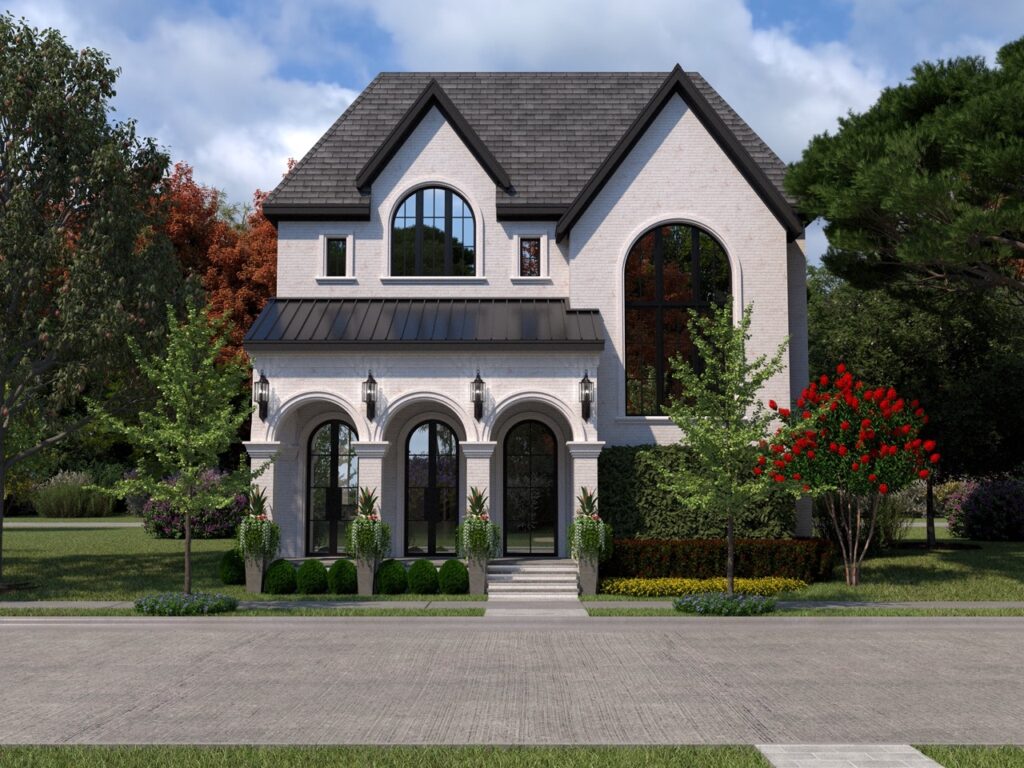The Ultimate Guide to House Plans: Everything You Need to Know
Custom Home Design Solutions That Transform Your Vision Into Reality
Building your dream home begins with the perfect house plan, and at Crest Residential Design, we’ve spent over a decade helping families across the region turn their architectural visions into beautiful, functional living spaces. Our comprehensive approach to residential house plans combines cutting-edge trends with timeless principles, ensuring that every home we create reflects our clients’ unique lifestyles while incorporating the latest innovations in modern living.
Whether you’re a first-time builder exploring your options or an experienced homeowner ready to create your forever home, understanding the house plan process can feel overwhelming. That’s where our expertise makes all the difference. We specialize in translating your dreams into detailed architectural drawings that builders can execute flawlessly, while ensuring every square foot serves a purpose. Our commitment goes beyond simply creating plans—we’re your partners throughout the entire design journey, offering guidance on everything from lot considerations to material selections.

Understanding Modern House Plan Trends and Functionality
Today’s house plans reflect significant shifts in how families live, work, and connect with their communities. Plans between 1,500-1,999 square feet have become the most popular size range, while smaller, efficient homes between 1,000-1,499 square feet are gaining momentum. This trend toward right-sized living reflects homeowners’ desire for efficiency over excess.
Modern families prioritize multi-functional spaces that adapt to changing needs. Home offices remain essential, with about one-third of all single-family plans offering dedicated workspace. Open-concept designs continue to dominate for their ability to create seamless flow between living areas, while the key lies in balancing openness with defined zones that serve specific purposes.
At Crest Residential Design, we’ve observed increasing demand for flexible floor plans that can evolve with families over time. Today’s homeowners want spaces that can serve as home offices during the day and entertainment areas in the evening, or guest bedrooms that double as hobby rooms when not occupied.
Key Elements That Make House Plans Work for Your Lifestyle
Effective house plan design starts with understanding how you actually live in your space. Personalization is at the forefront of modern house design, with homeowners looking for floor plans tailored to their specific needs, whether that means larger living spaces for entertaining or additional bedrooms for growing families.
Strategic Room Placement The relationship between spaces matters more than individual room sizes. Successful plans position frequently used areas—kitchen, family room, and primary suite—to minimize daily foot traffic while maintaining connectivity. Consider how morning routines, meal preparation, and evening relaxation patterns will flow through your home.
Natural Light and Storage Integration Modern house plans embrace open concepts to maximize natural light and create airiness. Strategic window placement enhances both functionality and energy efficiency. Today’s families require smart storage solutions built into the home’s structure rather than added as afterthoughts, from walk-in pantries to mudroom cubbies.
Navigating the House Plan Selection Process
Choosing the right house plan requires balancing aspirations with practical considerations. Your lot characteristics, local building codes, and budget parameters all influence which plans will work best for your specific situation.
Lot and Climate Considerations Before falling in love with any plan, evaluate how it will sit on your specific lot. Setback requirements, slope considerations, and utility locations all affect plan feasibility. Successful house plans also respond to local climate conditions—harsh winter regions need entry mudrooms and covered porches, while hot climates benefit from strategic shading and efficient cooling considerations.
Future Flexibility Consider not just your current needs but how they might evolve. Multi-generational living is a growing trend, with house plans catering to diverse family needs. Plans that can accommodate aging in place or changing family dynamics provide long-term value.
Essential Features for Modern Living
Sustainability has become fundamental in modern home design, with house plans prioritizing eco-friendly features from energy-efficient designs to sustainable materials. Today’s homeowners expect their plans to incorporate green living principles without sacrificing comfort or style.
Smart Home and Wellness Integration Modern plans anticipate technology infrastructure, making smart home integration seamless and cost-effective. Wellness-centered design focuses on creating homes that promote health and happiness, including considerations for air quality, natural light exposure, and spaces that encourage relaxation and activity.
Outdoor Living Connection Today’s plans blur the lines between indoor and outdoor living, creating harmonious balance between home comfort and natural beauty. Features like covered porches, outdoor kitchens, and seamless transitions to yard spaces have become standard expectations.
Working with Design Professionals
While pre-designed plans offer cost-effective solutions, working with residential design professionals like Crest Residential Design ensures your home plan perfectly matches your specific needs and lot conditions. Professional designers bring expertise in local building codes, construction methods, and design optimization that can save both time and money during construction.
The Value of Custom Design Our design process begins with understanding your lifestyle, preferences, and long-term goals. We develop preliminary concepts that balance your wish list with budget realities, refining designs through collaboration until every detail reflects your vision. Professional house plans include detailed construction drawings that builders can follow accurately, reducing costly changes during construction.
Budget and Timeline Considerations Understanding the relationship between house plan complexity and construction costs helps you make informed decisions early in the process. Simple, rectangular floor plans typically cost less to build than homes with multiple roof lines and custom features. However, upfront investment in thoughtful design often pays dividends in long-term satisfaction and efficiency.
The house plan development process typically takes 4-8 weeks for custom designs, depending on complexity and revision cycles. This timeline should align with your overall project schedule, including permitting, contractor selection, and seasonal construction considerations.
Ready to Create Your Dream Home? Contact Crest Residential Design Today!
Your perfect home is waiting to be designed, and Crest Residential Design has the expertise and passion to bring your vision to life. From initial concept through final construction drawings, our team provides the professional guidance and creative solutions you need to create a home that truly works for your lifestyle.
Contact Crest Residential Design today to schedule your consultation and take the first step toward your custom home. Let us show you how thoughtful design and expert execution can transform your dreams into the perfect place to call home.
